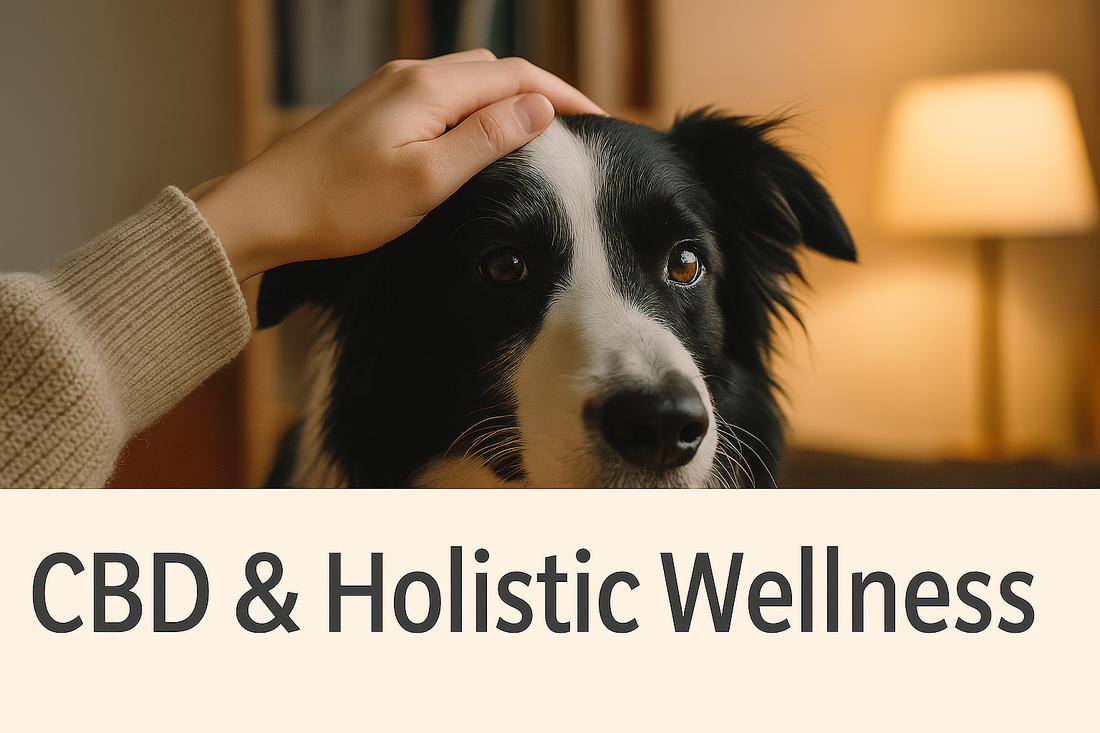
Natural Remedies for Pet Anxiety That Actually Work
Share
Introduction
Anxiety in pets isn’t just inconvenient—it can reshape your dog or cat’s world. Destructive chewing, pacing, whining, hiding, or obsessive licking are often labeled “bad behavior,” but they’re more accurately a pet’s way of saying, “I’m not okay.” If your companion seems restless or fearful, the goal isn’t punishment—it’s comfort, understanding, and the right plan.
Below, we’ll break down types of anxiety, how to recognize triggers, and how to build a layered, natural toolkit that helps most pets feel safer. You’ll find daily routines, step-by-step training, and gentle remedies you can combine thoughtfully. For grief- related stress or household change, we’ll also point you to supportive resources—because calmer humans help create calmer pets.
How Anxiety Shows Up (and What It’s Really Saying)
Anxiety is a nervous system on high alert. You may notice:
- Pacing, panting, trembling, pinned ears, tucked tail
- Destructive chewing, door scratching, or escape attempts
- Excessive barking/meowing, whining, howling, or yawning
- Hiding, refusal to come out, or “clingy” shadowing
- Compulsive licking/chewing (paws, belly, tail)
- House-soiling, drooling, vomiting, or loss of appetite
Think of these as signals, not disobedience. They say: “Something here feels unsafe.” Once you identify the “something,” you can tailor the remedy.
Common Types and Triggers
Separation Anxiety
Worry when left alone—even for short periods—often causes vocalization, destruction near exits, and frantic greetings. It’s common after routine changes or a major life event. If your household is healing after loss, remember that your pet may be grieving, too; our guide Helping Pets Cope with the Loss of a Companion offers gentle ways to restore safety and predictability.
Noise Sensitivity/Phobias
Thunderstorms, fireworks, construction, or even beeps can trigger panic. Many pets sense barometric changes before storms, so plan support early (safe space, sound masking, wraps).
Situational/Contextual Anxiety
Car rides, vet or groomer visits, new environments, crowds, or unfamiliar animals can prompt stress responses. Strategic desensitization paired with comfort tools works best here.
Change-Related Anxiety
Moves, new babies, new pets, schedule upheavals—or the absence of a beloved person or animal—can unsettle routines. For households processing grief, you might find comfort in Grieving a Pet: Why It Hurts and How to Heal; steadier human routines often translate into calmer pets.
First Principles: Safety, Routine, Choice
Three pillars soothe anxious pets:
- Predictability: Regular meal times, exercise, and sleep cues lower uncertainty.
- Agency: Offer retreat options (crates, covered beds, high perches) so pets can choose distance or closeness.
- Kind reinforcement: Reward calm, curious behavior. Avoid punishment—it increases fear and delays progress.
Natural Remedies That Work (and How to Use Them Together)
A layered plan works best: environment + training + gentle supplements. Introduce one change at a time so you can tell what helps.
1) CBD Oil (Pet-Formulated)
CBD (cannabidiol) is non-psychoactive and widely used to moderate stress responses. Many pet parents report benefits for separation anxiety, noise fear, and travel jitters. Choose pet-specific CBD with third-party testing; start low and follow weight-based guidance. Effects are often noticeable within 30–60 minutes. Always consult your veterinarian, especially if your pet takes medication or has a medical condition.
2) Pheromone Sprays, Diffusers, and Collars
Dog and cat appeasing pheromones mimic the comforting scent of a nursing mother. They’re odorless to humans and helpful for travel, vet visits, crate training, and introductions. Spray bedding or use a diffuser in your pet’s safe room.
3) Calming Chews and Supplements
Look for blends with L-theanine, L-tryptophan, chamomile, passionflower, valerian, or melatonin (for short-term evening support). These can be used for daily baseline calm or situational stress (grooming, guests). Introduce slowly and monitor for drowsiness.
4) Pressure Wraps (e.g., ThunderShirt)
Gentle, sustained pressure can down-regulate the nervous system, similar to a hug. Many pets relax within minutes during storms, fireworks, or car rides. Ensure a snug but comfortable fit; pair with treats to build positive associations.
5) Music and Sound Masking
Soft classical playlists or white noise can reduce startling. Start the soundtrack before a known trigger (e.g., approaching thunder) and keep it consistent. Many shelters use music to help anxious animals settle.
6) Scent and Touch
A worn T-shirt that smells like you can comfort a dog with separation anxiety. For cats, use familiar bedding and vertical spaces. Add gentle massage or TTouch strokes in short sessions, always respecting your pet’s consent cues.
Behavior Foundations: Desensitization + Counterconditioning
Natural tools work best alongside behavioral learning. Two gold-standard techniques:
- Desensitization: Expose your pet to a very small, non-scary version of the trigger (quiet recordings of thunder, seconds of alone time, short car idles) and increase gradually.
- Counterconditioning: Pair the trigger with high-value rewards so it predicts good things. Over time, the emotional meaning of the trigger changes.
Alone-Time Training (Micro-Reps)
- Give a special chew or lick mat your pet only gets during practice.
- Step out for 5–15 seconds; return before distress escalates. Quietly take the mat away.
- Repeat in short sets, adding a few seconds each day. Vary rooms and door types.
If your pet panics, the step was too big. Go smaller: 2–3 seconds, or just closing the door without leaving. Success looks boring: your pet barely notices you’re gone.
Sound Desensitization
Play thunder/fireworks at very low volume while offering treats or play. Over days, increase volume slightly only if your pet stays relaxed. Schedule sessions away from real-life storms.
“Settle” or “Mat” Behavior
Teach a default relaxation spot. Lure your pet onto a mat and reward lying down. Add a cue (“settle”). Gradually extend duration and practice in different rooms. This gives anxious animals a job: choose calm.
Environment Design for Calm
- Safe Room: A dim, quiet space with bed/crate, water, chew, and pheromone diffuser.
- Predictable Routines: Meals, walks, training, and rest at consistent times.
- Enrichment: Sniff walks, puzzle feeders, short training games—brain work tires worry.
- For Cats: Vertical perches, hiding cubes, multiple litter boxes, scent-soaked “security” blankets.
If anxiety follows a recent loss or household transition, rebuilding structure matters. Our piece How Do You Honor a Deceased Pet? offers soothing rituals that re-anchor routines—something sensitive pets often need after change.
Travel, Vet Visits, and “Big Day” Plans
Calm Travel Toolkit
- Pre-load calming chews or CBD as advised by your vet.
- Use a fitted harness/seat belt or carrier covered with a light cloth.
- Start the car and give treats without driving; take micro-drives before longer trips.
- Play soft music; avoid stop-and-go if your pet gets motion sick.
Vet/Groomer Visits
- Request “happy visits” where nothing scary happens—just treats and praise.
- Bring your pet’s mat and familiar scents; use pheromone spray in carriers 10–15 minutes prior.
- Schedule at quieter times; ask about fear-free handling.
Storm/Fireworks Plan
- Prep the safe room (wrap, music, pheromones) before the first rumble.
- Close curtains; run fans/white noise; offer long-lasting chews.
- Stay calm yourself—your body language sets the tone.
Nutrition and the Gut–Brain Axis
The brain listens to the gut. Quality protein, adequate omega-3s (EPA/DHA), and consistent feeding times support mood stability. Sudden food changes can elevate stress; transition gradually. For sensitive pets, a limited-ingredient diet paired with a pet-formulated probiotic may improve resilience over time.
Measuring Progress (So You Know It’s Working)
Keep a simple log for 2–4 weeks:
- Triggers: time, context, intensity (1–10)
- Tools used: CBD dose, wrap, chews, music, pheromones
- Behavior: latency to settle, appetite, vocalization, destruction
Look for slow but steady improvement: fewer outbursts, faster recovery, longer relaxed periods, and normal appetite/sleep.
When to Seek Veterinary or Behaviorist Care
Natural supports are ideal for mild to moderate anxiety. But if your pet self-harms, won’t eat, has frequent accidents, shows escalating aggression, or can’t be left alone safely, involve your veterinarian. A certified behaviorist can create a plan combining training and, if needed, short- or long-term medication. “Natural vs. medication” isn’t a contest—the right mix is the one that gives your pet relief and restores quality of life.
Common Mistakes (So You Can Avoid Them)
- Punishing fear: Correcting anxious behavior increases fear; reward calm instead.
- Going too fast: Desensitization fails if steps are too big. Make them smaller than you think.
- Inconsistency: Tools help only if used predictably—especially routines and training.
- Too many changes at once: Add one new tool at a time to see what truly helps.
Special Notes for Cats
- Preserve territory: multiple safe perches and hiding places reduce conflict.
- Respect consent: short, frequent play and petting sessions work better than marathons.
- Scratching posts, scent swapping, and pheromones reduce tension in multi-cat homes.
- Carrier training: leave the carrier out with soft bedding and treats so it becomes a safe place, not a trap.
Seven-Day Calm-Start Plan
- Day 1: Create a safe room; start pheromone diffuser; introduce mat “settle.”
- Day 2: Add music at rest times; begin 5–10 micro alone-time reps.
- Day 3: Introduce a calming chew or vet-approved CBD; log responses.
- Day 4: Sound desensitization at whisper-low volume + treats.
- Day 5: Sniff walk or puzzle feeders; short training games to build confidence.
- Day 6: Practice a short, happy car sit; reward calm.
- Day 7: Review your log; keep what helped; discard what didn’t; set a gentle routine for the week ahead.
FAQs
How long until I see results?
Some tools (wraps, music, pheromones) help immediately; supplements can take days to weeks to show steady change. Training progress should look gradual—think weeks, not hours.
Can I combine tools?
Yes—layering is often best. A typical combo for storms: pressure wrap + music + pheromone + pre-planned chew. Add CBD or chews if your vet agrees.
Will my pet “outgrow” anxiety?
Many improve with consistent support. But anxiety can return during life changes. Keep the routine flexible and your toolkit handy.
Closing Thoughts
Pet anxiety is real—and manageable. With patience, predictable routines, and a thoughtful mix of natural tools, most dogs and cats can feel safe again. Start small, celebrate tiny wins, and keep notes so you can see progress. If worry stems from loss or change, revisit the rituals and grief resources that steady the whole home—calm is contagious.
